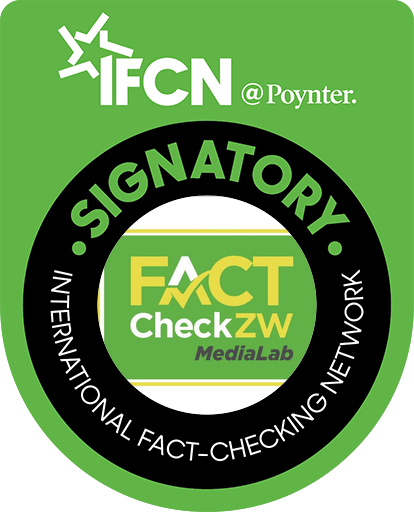CLAIM: It (the ZiG) is currently the worst-performing currency in the world
SOURCE: NewsHawks
VERDICT: False
The NewsHawks, a local online media house on February 11, 2025, claimed in a post on X (formerly Twitter) that the Zimbabwean currency – the Zimbabwe Gold (ZiG) – only introduced in April last year – was the worst performing currency in the world.
The publication was commenting on Zimbabwe’s troubled retail sector which is facing growing challenges amid declining economic activity due to liquidity problems and currency failure, leading to the closure of several supermarkets and other companies.
‘The new currency introduced last year – ZiG – amid official hype and noise has been a disaster,’ reads the News Hawks post in part.
‘It is currently the worst performing currency in the world, exposing Zimbabwean leaders’ incorrigible governance and policy failures underlined by corruption and incompetence.’
Worst performing currency via-a-vis weakest currency
Contrary to common understanding, a weak currency is not the same as a badly performing currency.
A weak currency can be defined as one with a low or decreasing value in comparison to other currencies.
It refers to a nation’s money that has seen its value decrease in comparison to other currencies. Weak currencies are often thought to be those of nations with poor economic fundamentals or systems of governance. A weak currency may also be encouraged by a country seeking to boost its exports in global markets.
A weak currency has a significantly lower value relative to other global currencies. This weakness is often measured by the currency’s exchange rate, like the U.S. dollar or the euro. When the exchange rate falls, the currency is said to be depreciating. While short-term fluctuations in currency value are normal, persistent declines indicate a weak currency.
One key indicator of a weak currency is inflation. High inflation erodes purchasing power, meaning the same amount of money buys fewer goods and services over time. When inflation spirals out of control, foreign investors lose confidence in the currency, causing its value to drop further in global markets.
As a result, countries with high inflation often experience weaker currencies, as seen in historical cases like Venezuela and Zimbabwe.
On the other hand, a worst performing currency is one that has greatly depreciated in a given period of time.
For example, in 2024 Nigeria’s local currency the naira which lost about 70% of its value against the dollar, became the third worst performing currency in the world after the Lebanese Pound and the Ethiopian Birr.
The naira had weakened 4.3%, the most in mid October of that year, to 1,670.65 to the dollar, according to data compiled by Bloomberg.
The US dollar’s global role as a reserve currency and its stability in international trade continue to shape exchange rates.
While some African countries have managed to strengthen their currencies by addressing inflationary pressures, others face ongoing challenges that hinder sustainable improvements.
As of November 2024, the South African rand had become one of the worst performing currencies since the US election, a symptom of the “Trump trade”, but also sharp falls in the prices of key commodity exports.
In early 2025, Zambia’s currency, kwacha, plunged as a severe drought increased power prices, risking hurting the African nation’s economy.
Out of the 10 worst-performing currencies globally, five are from Africa, including the Zambian kwacha, the Angolan kwanza and the Nigerian naira, according to data compiled by Bloomberg.
Based on the information available, here’s a breakdown of some of the worst-performing currencies in January 2025, along with the factors contributing to their decline:
Key Currencies and Factors:
- Lebanese Pound (LBP) – Continues to be among the weakest, driven by high inflation, a depressed economy, political instability, and an ongoing banking crisis.
- Iranian Rial (IRR) – Suffers from the impact of sanctions and geopolitical tensions in the Middle East.
- South African Rand (ZAR) – Experienced depreciation due to political turmoil and concerns over U.S. trade tariffs. Currencies pegged to the Rand also declined.
- South Sudanese Pound (SSP) – Weakened by ongoing conflict in neighboring Sudan, which has disrupted its economy and caused a refugee crisis.
- Indian Rupee (INR) – Experienced a lifetime low, effected by US trade tariff concerns, and portfolio outflows.
Weak currencies
Wise, a money transfer company, lists the top 10 weakest global currencies (based on their value compared to USD in 2024), with the weakest on top. The Lebanese Pound (1 USD = 89,521.51 LBP ) is the weakest currency followed by the Iranian Rial (1 USD = 42,000.00 IRR), Vietnamese Dong (1 USD = 25,411.20 VND), Laotian Kip (1 USD = 21,709.90 LAK), Sierra Leonean Leone (1 USD = 22945.70 SLL), Indonesian Rupiah (1 USD = 16,260.00 IDR), Uzbekistan Som(1 USD = 12,992.00 UZS), Guinean Franc (1 USD = 8,641.43 GNF), Paraguayan Guarani (1 USD = 7,902.05 PYG), and Malagasy Ariary (1 USD = 4,689.45 MGA) respectively.
The values in brackets are the current and not necessarily for 2024.
Xe.com, in its almost similar list of weakest currencies in the world, also places the Lebanese pound in first position and the Malagasy ariary in position 10. The only difference is in the Laotian kip, Sierra Leonean leone which exchanged positions for and five respectively. Elevate and FXSSI have almost similar lists, with slight differences of underperforming currencies in the world both of which also exclude the ZiG.
Similarly, Bankbazaar.com, in its list of Top Cheapest Currencies in the World for 2025 includes almost all the currencies listed by Wise and Xe save for the Lebanese Pound and Malagasy Ariary. The list, which draws parallels with the Indian Rupee, includes the Cambodian Riel and Ugandan Shilling in the 9th and 10th positions respectively.
Bankbazaar.com cites current account deficits, economic performance, government debt, inflation and interest rates, recession, speculation, and terms of trade as some of the factors that have an impact on currency exchange rates.
What is the value of the Zimbabwean ZiG?
According to the Reserve Bank of Zimbabwe (RBZ), as at 14 February 2025, the interbank exchange rate between the US Dollar and the ZiG is 1:26.4365.
The Zimbabwe ZIG does not appear on current lists of the worst performing currencies or the weakest. It only appears on Steve Hanke’s currency watchlist of 24 June 2024 as part of that week’s worst performing currencies. Even on that list, it is not the absolute worst, though.
Does a weak currency mean the country is poor?
A weak currency doesn’t always reflect economic strength. Japan serves as a prime example – despite a high exchange rate with the USD (1 USD ≈ 150 JPY), it maintains one of the world’s strongest economies.
Conclusion
The claim ‘It (the ZiG) is currently the worst performing currency in the world,’ is rated false in that in USD terms, the ZiG is not the worst performing in the world in its depreciation. It is also not the weakest currency in the world as it trades at an exchange rate of US$1: ZWG26.4365 compared to the Lebanese Pound and the Iranian Rial which trade at 89,521.51 and 42,000.00 respectively. While the country’s currency is unquestionably underperforming, it is not the worst in the world. However, the strength or weakness of the currency is not necessarily a reflection of the country’s economy.











